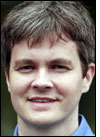When a 60-foot-long ship crosses the stage during a play produced by Sight and Sound Theatres, the vessel’s location, as well as the positions of nearby props, will be tracked using ultra-wideband (UWB) RFID technology. The movements of properties and pieces of the set can be fully automated, the theater company reports, thereby ensuring a more realistic effect, while also eliminating the need for manual control. The RFID solution, provided by tracking and navigation technology firm iTrack, includes UWB technology provided by real-time location system (RTLS) company Time Domain, which will ensure that no prop moves off course or becomes at risk of colliding with another object on stage.
Sight and Sound Theatres brings Bible stories to stages in Lancaster County, Pa., and Branson, Mo. The Lancaster theater seats more than 2,500 patrons. According to the theater company, the productions are collectively known as the “Christian Broadway,” and each can include everything from music and dancing to live animals and large moving props, as well as other special effects. To manage the movements of such props as a giant ship used for the story of Jonah, the company is employing a motion-control system produced by Niscon, incorporating omni-directional drive units from Vehicle Technologies (Vetex).
In large-scale theatrical productions, stage managers must typically track the movements of props, and send cues to actors and stage personnel in the event that something must be adjusted on stage during a performance. “The challenge of moving sets autonomously on the Sight and Sound Theatres stage presented a hurdle that wasn’t easily solved,” explains Warren Keeney, the theater company’s principal electronics designer.
The combined solution from iTrack, Vetex and Niscon, Keeney says, will enable Sight and Sound Theatres to have its set pieces move autonomously in any path onstage. That, he predicts, “will bring about a new level of technical theater.”
One version of the iTrack TNS-400 Tracking & Navigation System, which includes a battery-powered tag approximately the size of two packs of cigarettes, was originally developed for the defense industry, and will be used by a defense contractor to track the locations of tagged items, says Jerry Atkinson, iTrack’s CEO. The TNS-400 system was customized for the entertainment sector by iTrack’s president, Edzko Smid, to provide production companies with the precise position of every moving object or person on stage, as well as the ability to autonomously control any motorized props. However, no actors will be tagged during the Jonah production.
The entertainment version of the TNS-400 system includes the Autonomous Vehicle Controller (AVC) module, a battery powered RFID tag containing sensor devices that can be attached to a prop in order to track its location, and thus provide automated stage-management systems with the data necessary to control that object’s movements. The module has a built-in Time Domain circuit board and a UWB RFID chip, as well as sensors consisting of an accelerometer, a gyroscope and a magnetic compass.
With the UWB technology, each AVC module can transmit and receive data with another such module, says Jon Hedges, Time Domain’s director of sales and marketing, using about 30 microwatts of power. In that way, he explains, the module can determine the other device’s location.
The Autonomous Vehicle Control module will be attached to the 60-foot ship, as well as to two trees and a set of gates, all of which will be mobile. As the props and scenery pieces move around the stage, each AVC module will capture transmissions from the other modules, as well as from six UWB RFID transceivers attached above the stage in order to improve location granularity.
Each AVC module transmits a signal pulse between 3.1 and 5.3 GHz, and is encoded with its own unique ID number, as well as sensor data. Other modules receive the pulse and forward that data, along with their own unique identifiers. That response is received by an access point that routes the information to iTrack’s software. The software then determines the “flight time”—that is, the amount of time required for an AVC module to receive signals from other modules or overhead transceivers, and to utilize data from the module’s sensors—such as compass location—in order to fine-tune the tagged prop’s location. The data from the AVC modules and UWB transceivers, Atkinson says, enables the iTrack software to calculate an object’s positioning within a few centimeters, at a rate of 10 times a second. That information is then fed to the Niscon stage-management system, to instruct each prop’s Vetex drive unit where to move next.
Additionally, the software data is displayed for the stage manager, who can manually override the automated operation if he or she sees a problem with the set—for example, a prop moving too close to an actor. Individuals on stage can also halt the prop’s movement using a joystick controller.
Sight and Sound Theatres intends to use the system for three more stage plays following the Jonah production. According to Atkinson, the solution can also be marketed to other theaters, as well as to any business or organization that operates automated, unmanned vehicles.


